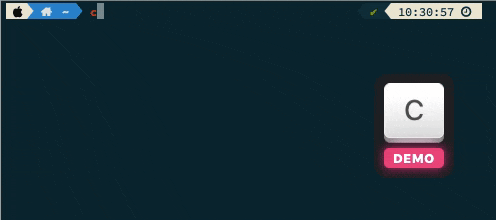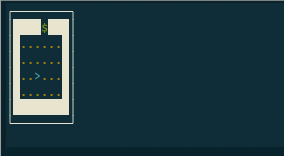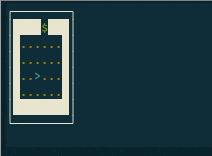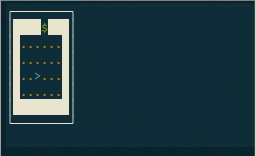-
Notifications
You must be signed in to change notification settings - Fork 0
Starting example
We will create a simple script, that will help Karel find a treasure hidden in a wall of a rectangle room.
This is the starting map:
####$###
#......#
#......#
#..>...#
#......#
########
First you will need Python3 and a terminal1.
Now you can use commands in the terminal. Lets start by downloading the Karel package:
pip3 install karel_robotNow you will need to store the map if you don't have it already2:
cd ~/Desktop # go to a directory you can find
nano window.txt # save the above map to a text file, use your favorite text editorCreate a Python text file (treasure.py) and at the top of it load Karel:
from karel_robot.run import *You can save the file and run it with Python from command line:
python treasure.py # open an empty infinite map
python treasure.py -m window.txt # open the map from file if you are in the same directory
Great, Karel does not move though. Let's fix that! Edit the file like this:
from karel_robot.run import *
move()Run with the map again and Karel should have moved one step. Now we march him to the wall:
from karel_robot.run import *
while not front_is_blocked():
move()We use another function called front_is_blocked and Python while loop and logical not.
What they do should be self-explanatory, but lets run the script again, to make it obvious:

Now that we are facing wall we will go around and wont stop until we find the treasure:
from karel_robot.run import *
while not front_is_blocked():
move()
while not front_is_treasure():
turn_left()
move()
turn_right()Now if the treasure was in the wall in front of Karel, he would have found it! Sadly there are corners in a room and Karel got stuck there:

Python comes to the rescue with if construction.
That is exactly what we need and we can simply turn when we get in a corner:
from karel_robot.run import *
while not front_is_blocked():
move()
while not front_is_treasure():
turn_left()
if front_is_blocked():
turn_left()
move()
turn_right()
message("Found it!", paused=True)Running the script now should finally get Karel to the treasure.

If you watched at Karel carefully you might have noticed he gets a little faster in the corner. The problem is he is too fast! There might have been a treasure and he would have missed it.
This is called... wait for it... a corner case! Turns out there are at least 3 problems with the code. Take a moment to think about them and then click the solution:
Solution
- When treasure is in the corner, then Karel goes around in a loop.
- When Karel starts next to a wall or even treasure, he can go a full loop if he looks the other way.
- If the room is only one tile, Karel will crash into a wall and die.
You can check out these maps named 0*_window.km in the
world directory.
We should really do something about the third problem!
from karel_robot.run import *
while not front_is_blocked():
move()
while not front_is_treasure():
turn_left()
if front_is_blocked():
turn_left()
else:
move()
turn_right()
message("Found it!", paused=True)Hah! Turns out we only needed to add an else case.
This solves both the first and the third problem.
The second one is left as an exercise to the reader. 😝
With these simple building blocks, you can already solve many of Karel's problems. However after solving a few, you may find that some parts are repeated over and over again. Python solves this by letting us write functions:
from karel_robot.run import *
def go_to_wall():
while not front_is_blocked():
move()
def go_around_until(stop_condition):
while not stop_condition():
turn_left()
if front_is_blocked():
turn_left()
else:
move()
turn_right()
# This executes the previous only if the script is run directly,
# but you can import it in others and only use the functions
if __name__ == "__main__":
go_to_wall()
go_around_until(front_is_treasure)
message("Found it!", paused=True)This is pretty magical. Do no think too hard about how the script knows who he is or how the function takes another function. 😉
If you want to solve some simple Karel problems, there is a list on next page:
For an extra level of fun, you can solve them in Karel's own language!
The example is adapted from a paper3 on cooperative education in CS1. It is inspiring a quite easy to read.
1: If you don't use terminal, good tutorial can be easily found online, for example at uw.edu.
2: For later tutorials it would be best to clone this project and use the maps and programs provided here. 😉